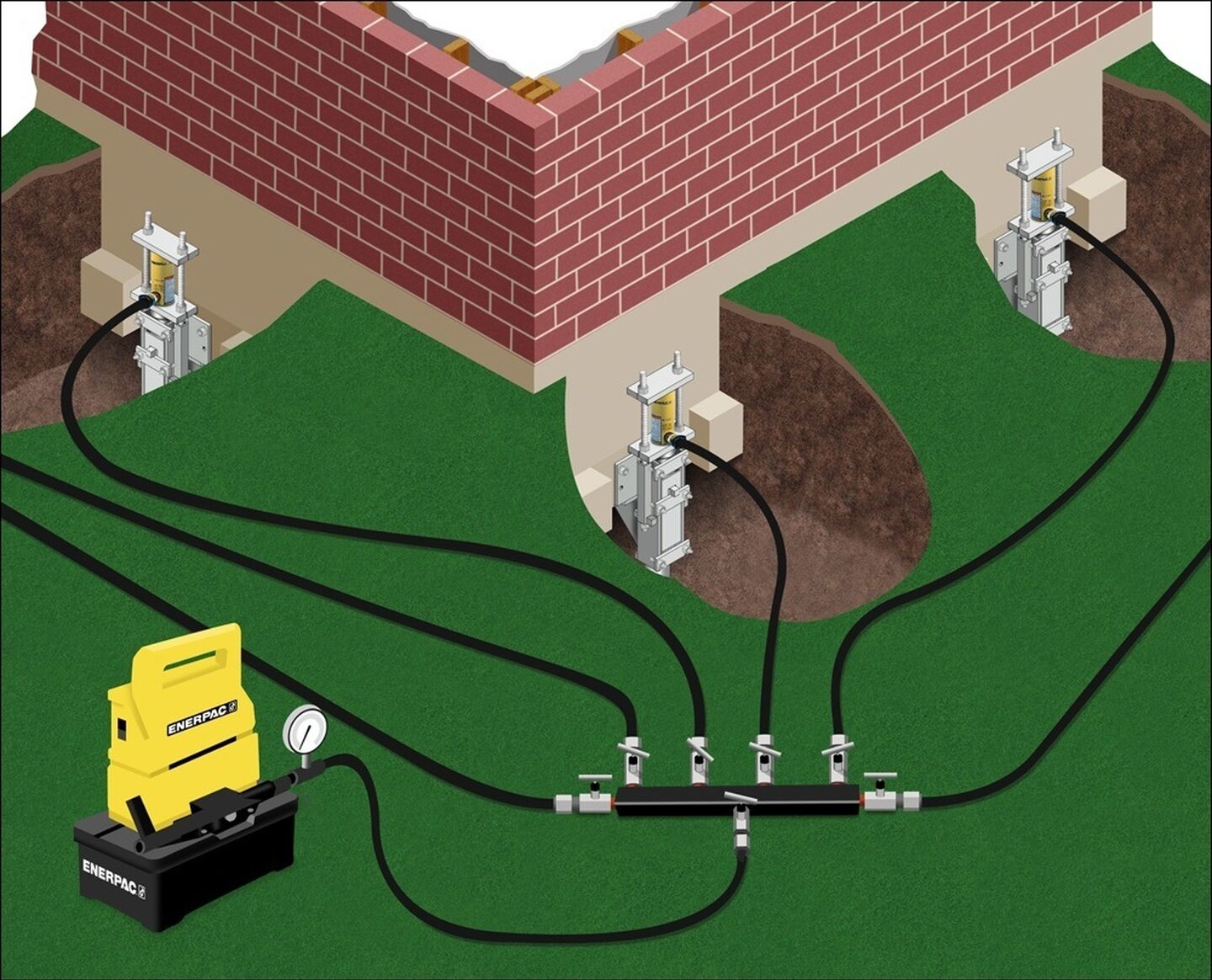Foundation Repair Methods: Helical Piers vs. Hydraulic Push Piers

When the foundation of a home sinks, drops or settles, it causes structural havoc throughout the home. Walls shift out of plumb, brick- and stonework crack, mortar crumbles, windows and doors stick and openings for seepage appear in the basement.
As disastrous as that sounds, it’s not a fatal prognosis for the home. In fact, a home with a severely damaged foundation can be repaired by raising it back to its original level and stabilizing it there. It’s not a small job but it’s also not an uncommon one.
The basics of this type of foundation repair are the same regardless of method – place supporting structures in the soil below the foundation, employ a means of raising the house to level and attach the foundation to the supports.
Those supporting structures are known as “pilings” or “piers” and can be made of concrete or steel. Using drilled concrete piers or pressed concrete pilings are older methods that have largely been supplanted by the use of steel – a stronger material that allows for easier, faster placement and an integrated approach to raising the structure.
When it comes to steel piers, there are two kinds – hydraulic push piers and helical piers. How do they differ and is one better than the other?
Hydraulic Push Piers or Helical Piers?
A hydraulic push pier is a column of steel tubing that, as the name implies, is pushed into the soil below the damaged foundation by a hydraulic ram until it reaches a load-bearing stratum. This process uses the home as a sort of counterweight to ensure penetration to full depth.
Installing the push pier starts with excavating a spot alongside the foundation, notching the footing and attaching a steel bracket to the foundation. The hydraulic ram is attached to the bracket and is used to drive sections of steel into the soil until the column is completed. When all piers have been driven to the appropriate depth, a hydraulic pump attached to each one is used to raise the house back to level. The columns are then secured to the brackets and the excavations are backfilled.
A helical pier most closely resembles a very large screw. It consists of a long steel shaft with a number of spiral plates called helices welded to it. The helical pier is driven into the soil by a large rotating bit until a torque test determines that it is solidly engaged enough to provide the necessary support.
Both have disadvantages, although the worst for hydraulic push piers is that they should not be used to support or stabilize light construction such as small additions because these structures lack the necessary weight to enable the piers to be driven.
Helical piers, however, have a number of shortcomings. For example, they are supported by the same active soil that may have been part of the cause of the damage in the first place. Also, they are more likely to buckle under too-heavy loads or weight shifts than are push piers. They do work very well for lighter structures and can be installed quickly and used immediately.
For major foundation damage caused by settling, sinking or dropping, however, hydraulic push piers are the recommended solution for the stability and integrity they provide. A competent foundation repair contractor will use pertinent engineering data to recommend the proper number and placement of piers and installation can be accomplished quickly to achieve permanent stability with a minimum of disruption and no lasting external signs of the work.
At U.S. Waterproofing, our foundation repair experts rely on solid engineering data and the latest repair technologies to permanently stabilize homes with sunken or dropped foundations. We are able to diagnose foundation problems accurately and recommend approaches ranging minor repairs to complete foundation replacement. Why not ask for our free advice?
Want to know more about the difference between hydraulic push piers and helical piers? Please post your questions in the Comments box below.




